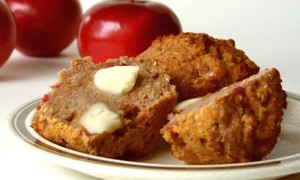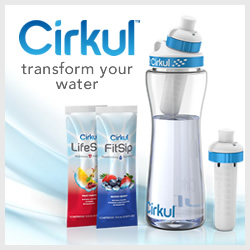 Homemade butter is one of the most delicious and nutritious things you can make for yourself and your family, especially when it comes from grass-fed raw cream. The nice thing is that making butter is so simple, and there are two easy ways to do so. One method is so easy, you can even get the kids involved….which is a lot of fun.
Homemade butter is one of the most delicious and nutritious things you can make for yourself and your family, especially when it comes from grass-fed raw cream. The nice thing is that making butter is so simple, and there are two easy ways to do so. One method is so easy, you can even get the kids involved….which is a lot of fun.
A Few Facts About Butter
- butter protects us from heart disease
- butter is high in vitamin A
- butter contains lecithin
- butter is high in anti-oxidants
- butter is a rich source of selenium
There are too many facts/benefits to eating butter to list here, so see this article on butter “Why Butter is Better” by Sally Fallon and Mary G. Enig, PhD for much more information.
Making Butter: Jar Method (Child Friendly)
This method of making butter is best to do when you have a few people around that you can pass the jar around to. Each person gets a couple of minutes shaking the jar and the end result is yummy, delicious homemade butter. This one is also fun for children to help with.
You will need:
- 1 quart-sized jar preferable plastic (in case your child drops it)
- 1 tight fitting lid for your jar
- 2 cups fresh raw cream, from grass-fed cows (you could also use organic cream – but NOT ultra-pasteurized)
- a fine mesh strainer, to rinse the butter
Pour your cream in the jar. Do not fill more than halfway, as we need to have enough space for it to bounce around inside the jar. Put lid on the jar and allow the cream to warm slightly, it works best if the cream is about 62F.
Make sure lid is tight, and shake the jar. Keep shaking until butter is made…you will know, because all of a sudden you will have a mass or clump floating in the jar with some liquid around it.
Pour the contents of the food processor/blender/mixer into a fine-mesh strainer and drain. *NOTE: Do this over a bowl if you would like to save the liquid….know as buttermilk – though not “cultured” buttermilk. To Make “Cultured Butter/Buttermilk”, follow the instructions at the end of this page.
The mass in the strainer is your butter, rinse it well with cold water while pressing to release the liquid. Keep rinsing until water runs clear (if any liquid remains it will make your butter spoil faster).
Put butter into a bowl and season to taste with salt. Serve immediately or store in the fridge for up-to 2 weeks. Also freezes well.
Making Butter: Blender – Mixer – Food Processor Method
Making butter in the blender or food processor is extremely easy, and fast too.
You will need:
- a food processor or blender or stand mixer
- 2 cups fresh raw cream, from grass-fed cows (you could also use organic cream – but NOT ultra-pasteurized)
- a fine mesh strainer, to rinse the butter
Step 1
Allow cream to warm up slightly, it works best if the cream is about 62F.
Step 2
Food Processor: Pour cream into your food processor. Start the machine and watch the cream carefully; it will go through several stages: sloshy, frothy, soft whipped cream, firm whipped cream, coarse whipped cream. And all of a sudden the cream will seize and the whirring will change to sloshing. A few seconds later a mass will appear (that is your butter). As soon as this happens, follow the instructions in Step 3.
Blender: Pour the cream into blender container and begin blending on low speed. If you blend too fast, you’ll end up with whipped cream. Continue blending on low until you see flecks of butter swirling around in the mix. This may take several minutes, but watch carefully. The yellow flecks will start to get larger and form a bigger mass; there will be lots of other liquid suddenly swishing around in the blender as well. As soon as this happens, follow the instructions in Step 3.
Stand Mixer: Pour cream into bowl of your stand mixer; beat at high speed until flecks of butter begin to form. Reduce to low speed until butter separates from milk. As soon as this happens, follow the instructions in Step 3.
Step 3
Pour the contents of the food processor/blender/mixer into a fine-mesh strainer and drain. *NOTE: Do this over a bowl if you would like to save the liquid….know as buttermilk – though not “cultured” buttermilk. To Make “Cultured Butter/Buttermilk”, follow the instructions at the end of this page.
The mass in the strainer is your butter, rinse it well with cold water while pressing to release the liquid. Keep rinsing until water runs clear (if any liquid remains it will make your butter spoil faster).
Put butter into a bowl and season to taste with salt. Serve immediately or store in the fridge for up-to 2 weeks. Also freezes well.
Now go enjoy your freshly made “homemade” butter. Yummm!
UPDATE! “Cultured” Butter / Buttermilk
Cultured butter has a lovely mild taste, and leaves the resulting drained liquid (buttermilk) that is left-behind “cultured” as well. This liquid can be used in baked goods to “soak” before baking.
You will need:
– 1 quart fresh raw cream, from grass-fed cows
– 1/4 cup cultured buttermilk (store-bought is fine)
- Mix buttermilk and cream together, cover and leave out at room temperature for about 12 hour (or overnight).
- After about 12 hours the cream should have thickened. Place in fridge to chill for about 2 hours. (the cream should be about 62F to make butter)
- Now you can make cultured butter. Simply follow with the instructions for “Making Butter: Blender – Mixer – Food Processor Method”, which is located above.
Makes approx. 3/4 pound Butter.


I love doing this now that we are getting raw milk – the fresh butter is so yummy! One thing you didn’t mention is that the liquid that is left after you make butter is the buttermilk and can also be used in cooking. So when you strain it, make sure it strain it over a bowl and save the liquid.
You are right, thanks so much for mentioning that 🙂
The liquid left behind would be “buttermilk”, but not “cultured buttermilk”. So it would indeed be OK to use for baking, but would not be good for soaking baked goods prior to baking to neutralize enzyme inhibitors & reduce phytic acid (since it is not cultured). Though there is a way to make butter AND have the resulting buttermilk be “cultured”. This way involves another step, but leaves the butter with a very mild (and yummy) taste.
I will go ahead and add the instructions for Cultured Butter/Buttermilk at the bottom of the post in-case others are interested as well.
Ahhhh..very interesting! I have been using my “buttermilk” to soak grains because I did not know there was a difference. I will have to check out the instructions you post and start doing it that way. Thanks – I love learning something new! 🙂